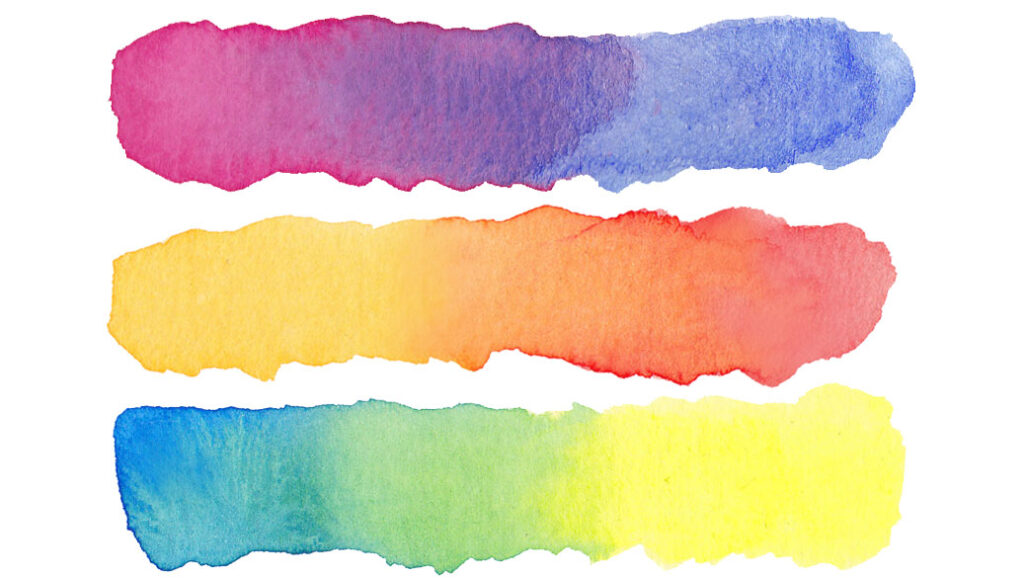
The “Magic Palette Method”!
In this lesson I’d like to show you how to get the best out of your color mixing and how to make amazing bright color mixes with your watercolors.
Not all watercolor paints are the same. You might think that yellow is yellow, and blue is blue. But pigments used in watercolor paints have characteristics which affect the appearance of the final mixed color.
Let’s start with the basics.
It’s generally understood that you can mix any color using just three primary colors:
- Yellow
- Blue
- Red
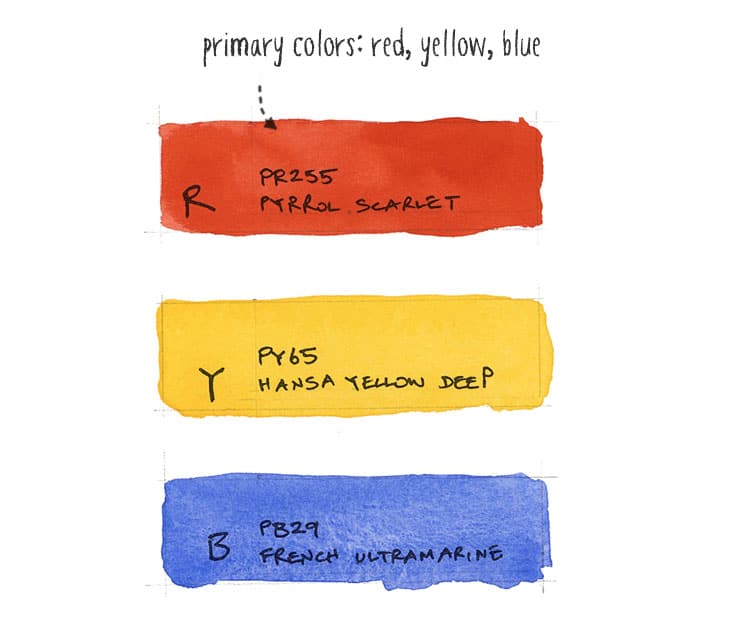
These are known as primary colors because you cannot mix them using any other color combinations. You just can’t… If you only have yellowish and bluish hues in your palette you’ll never be able to mix red.
So you’re probably saying to yourself “great” all I need is three tubes of paint and I can mix any kind of color I want.
Wrong…
I remember learning this after a great amount of frustration trying to mix nice bright greens. No matter what I did I just couldn’t produce the color I wanted!
This is because all watercolor paints are based on pigments which have a distinct color bias. For example, “Lemon Yellow” is a little bit greenish (therefore it has a cool bias). And “Hansa Yellow Deep” has a bit of red in it (this gives it a warm bias).
We say that Lemon Yellow is a cool hue, and Hansa Yellow is warm.
Tips & Tricks: The notion of warm and cool colors is important to this story. Color temperature can most easily be understood with the help of a color wheel. Warm colors are those that tend towards red and orange, whereas cool colors are those that tend towards blue and green.
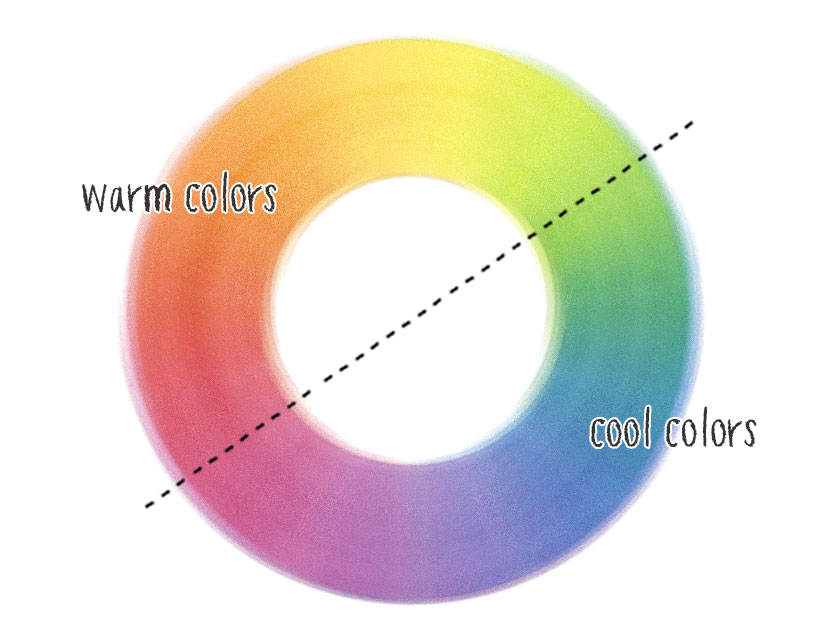
Now let’s go back to our tubes of yellow and blue paint. For example, if you try to mix a warm yellow with a warm blue, there is NO WAY you will end up with a bright vivid green! Mixing these two warm paints produces a toned down earthy green color, not an intense green.
So why is this?
The color appearance of the mixed paint depends on the color temperature of the pigments being used.
So how the heck do you figure out which combinations of paint to use to achieve a desired color?
If you read my first lesson then you’ve probably already guessed the answer.
You need to start with a range of both warm and cool primary colors. In other words, a warm and cool version of each primary color. That’s a minimum of six paints. Here’s an example:

The Magic of the Split Primary Color Palette
This collection of six primary colors is referred to as a split primary palette. Using a split primary color palette is a principle that makes a fundamental difference between dull muddy color mixing and bright lively colors!
Tips & Tricks: The term “split primary” refers to the idea that each primary color is split into both warm and cool versions.
But it’s even better than that! If you want to be able to mix the widest possible range of different colors, having six warm and cool primary colors in your mixing palette is the best way to achieve this (unless of course you fancy buying every possible tube of paint available).
Don’t worry. I didn’t have a clue what I was doing when I first started mixing paints. Worse than that, I had no idea which paints I should choose to begin with. But now I’m going to show you a quick and handy reference tool you can use to help you mix any color you want.
It’s called a split primary color wheel.
In a nutshell, this color wheel shows you how to mix intensely bright greens, purples and oranges, (also known as secondary colors) and when you understand the theory, you can also mix any muted or earthy versions of these secondary colors.
A split primary color wheel is set up in the following way. You start by arranging the six cool and warm primaries as follows:
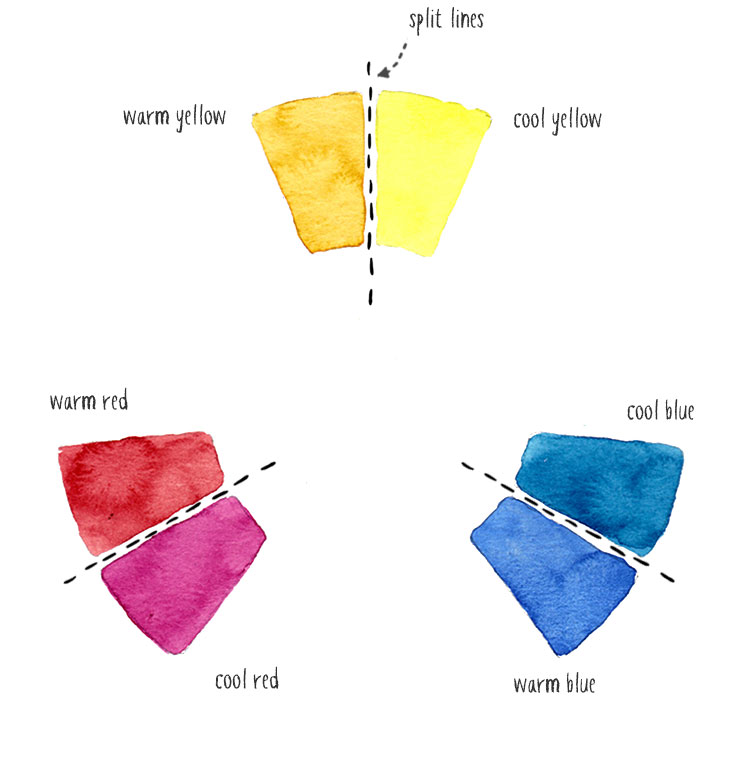
Then you mix together the two primary colors that are closest to each other on the wheel, which produces the secondary colors green, purple, and blue. The result of these combinations is a range of brightly saturated secondary colors.
So the magic formulas for mixing bright secondary colors are:
Cool yellow + cool blue = pure green
Warm blue + cool red = pure purple
Warm red + warm yellow = pure orange
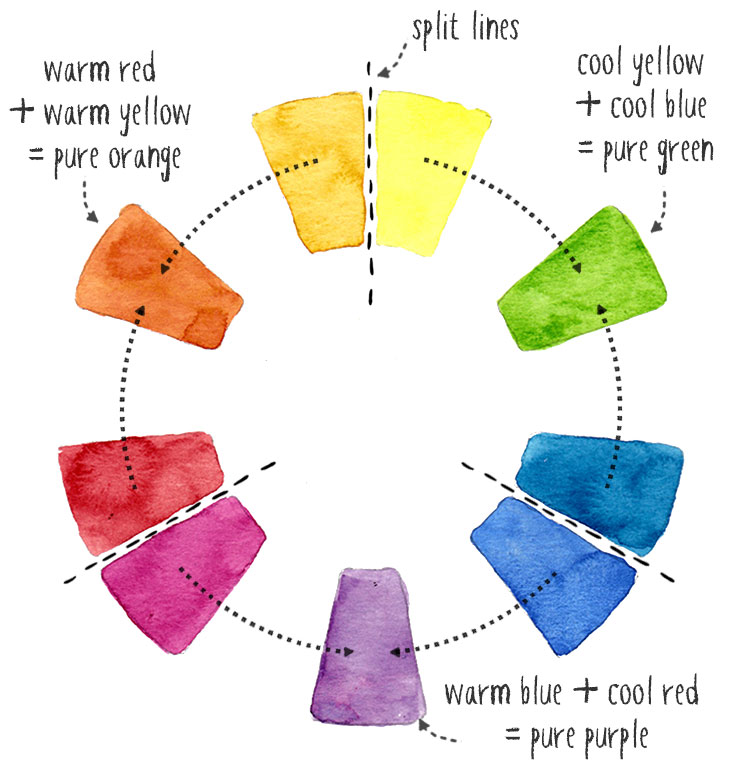
Then, next to each secondary color you can see I’ve mixed the tertiary colors. Yes… You guessed it. These are the color mixtures that sit between the primary and secondary colors on the color wheel. So the hue “yellow-green” sits between cool yellow and green, etc.
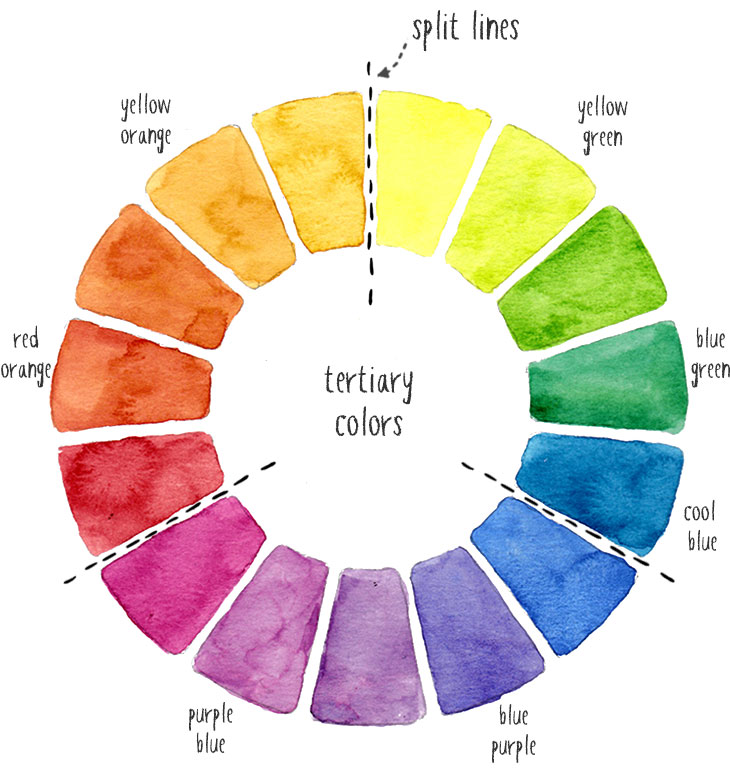
Now let’s take another look at the color wheel. Each primary color is split into two versions, right? Warm, and cool… These split lines divide the wheel nicely into three sections, or thirds.
If you try mixing across the split lines, from one section to another, this results in a muted or toned-down version of the intended color. Like in the example earlier, a warm yellow mixed with warm blue results in a muted green, because these two colors cross the boundaries of the split lines.
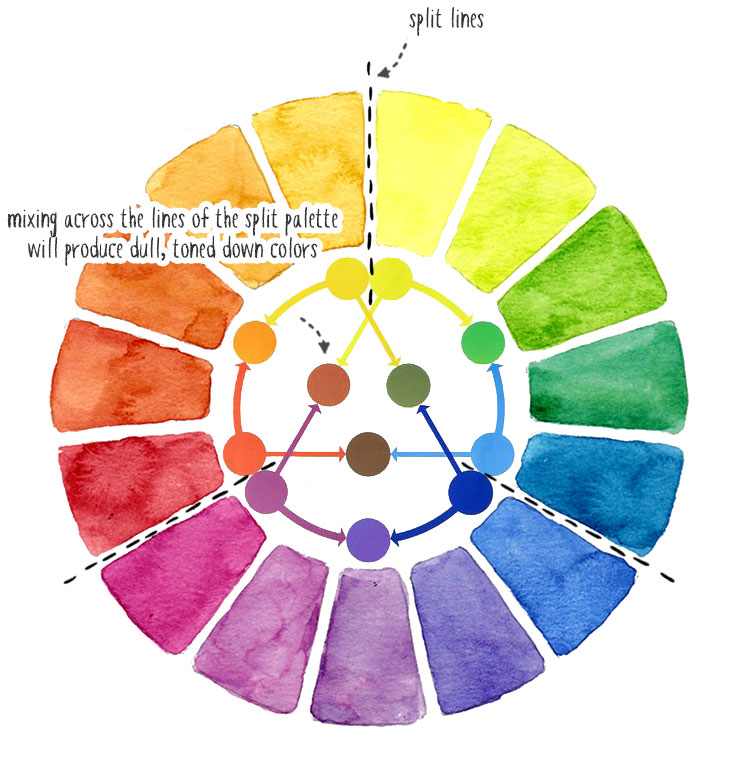
Get it !?
The benefit of this mixing palette is that you can very easily mix a full spectrum of colors. Also mixing with a split primary color wheel will naturally train you how to mix intense vivid colors or subdued muted hues, according to what you need!
Isn’t that great?
And on top of that, (like I already said), you probably just saved a lot of money on tubes of paint !
Whew !
Hopefully you should now feel better equipped to get the best out of your color mixing. Good color mixing and the proper use of color is obviously one of the essential parts of successful painting. Remember to use a split primary color wheel as a mixing reference. You can download this PDF here… Or better still, make one of your own!
Thanks for reading !
Anthony
P.S. (IMPORTANT) If you enjoyed this and want more I strongly suggest you “whitelist” my email address (which is [email protected]). Recently, Gmail and some others have started blocking important emails because of updates to their spam filters. I will not spam you. And you can unsubscribe any time you want. I will, however, send you promotions for my watercolor courses… Please note that any purchase is entirely discretionary. Everything else is free. So if you want to keep receiving my painting tips, please put my email in your “safe senders” list. And to find out how to do this, read this page…
